Expansion of the Toxics Release Inventory Program
Since its creation in 1986, the Toxics Release Inventory (TRI) has expanded through the addition of chemicals and industry sectors. The graphs below show when regulations changed the program and the relationship between those changes and the total amount of chemical waste managed at facilities.
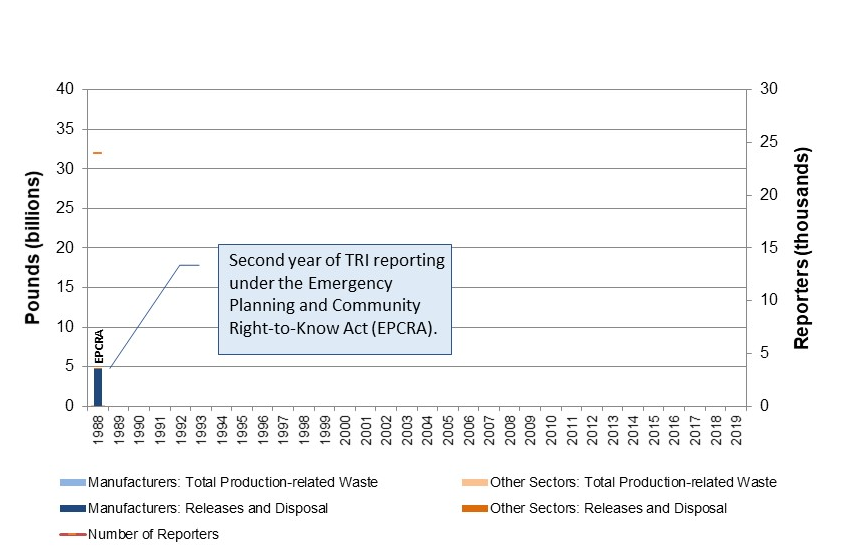
1988
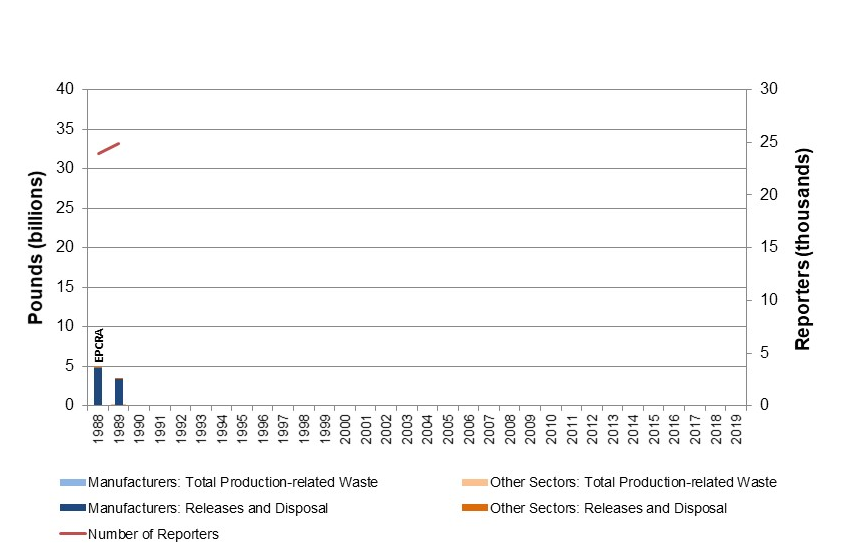
1989
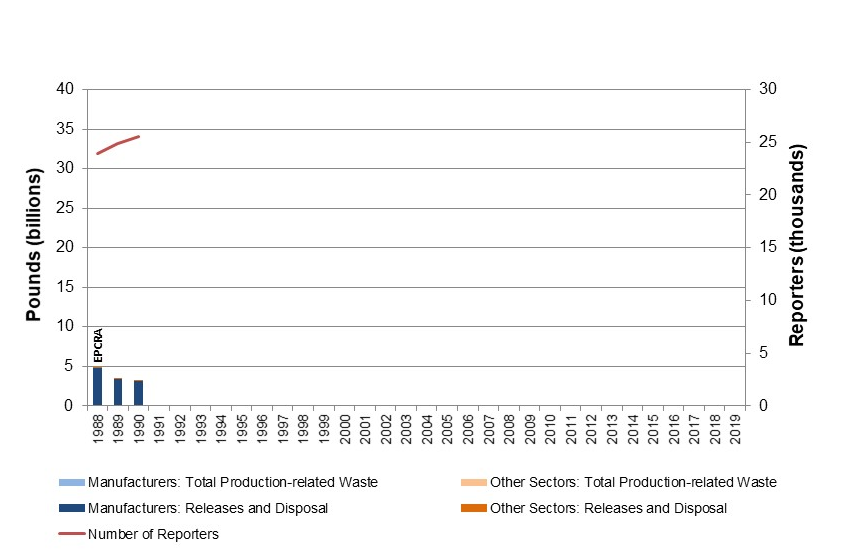
1990
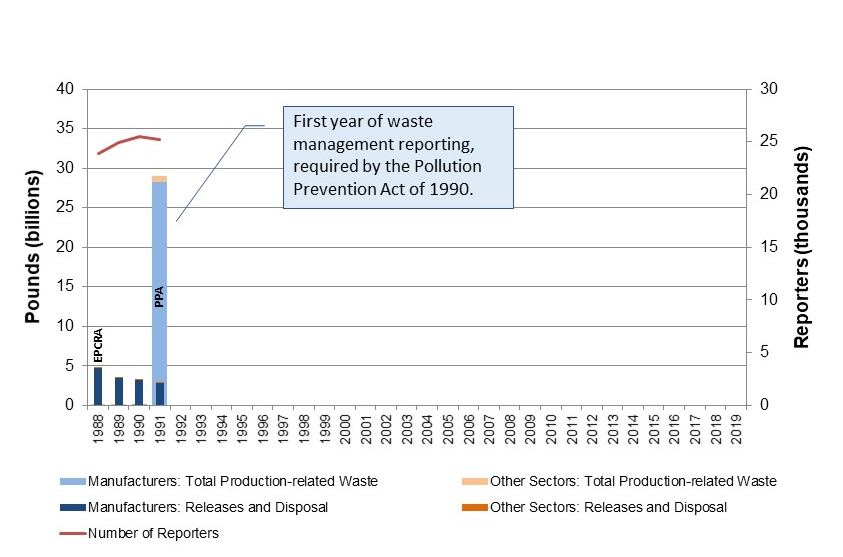
1991
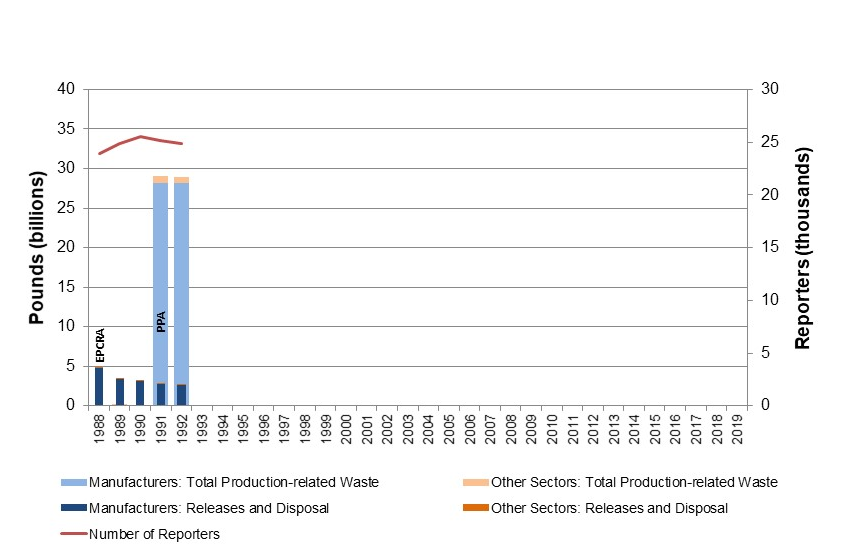
1992
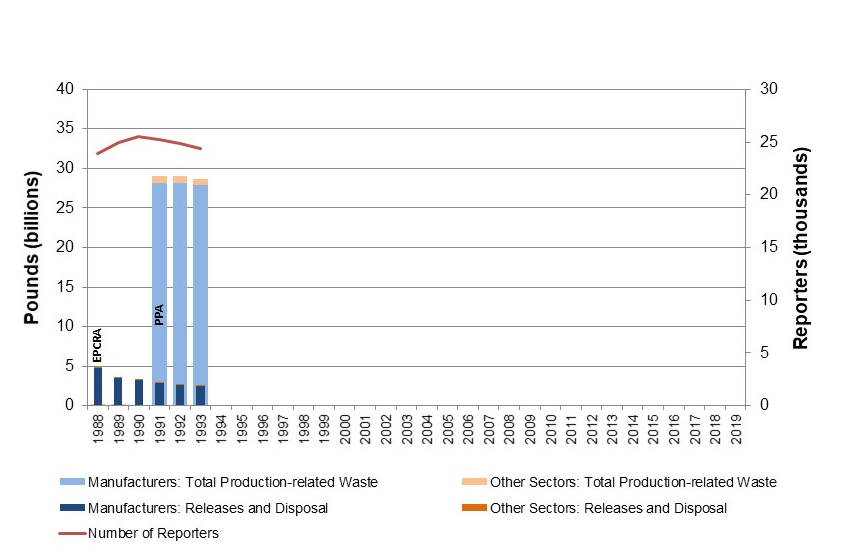
1993
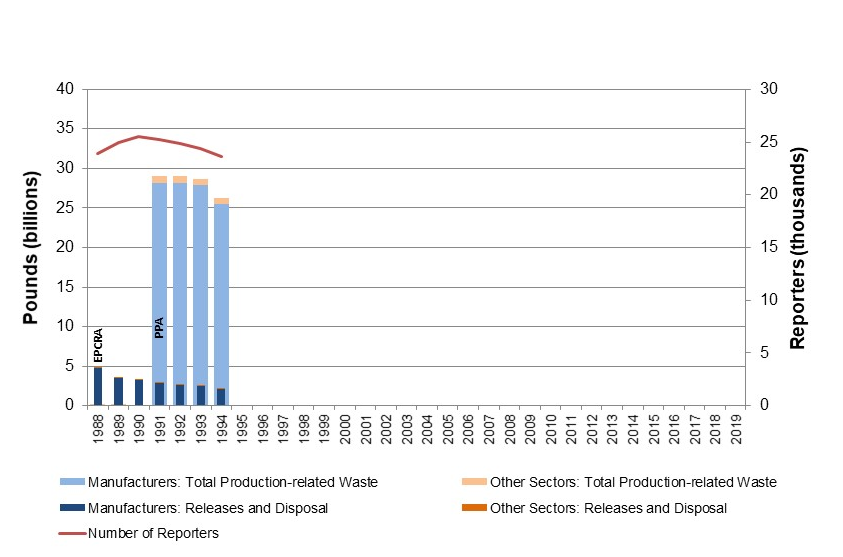
1994
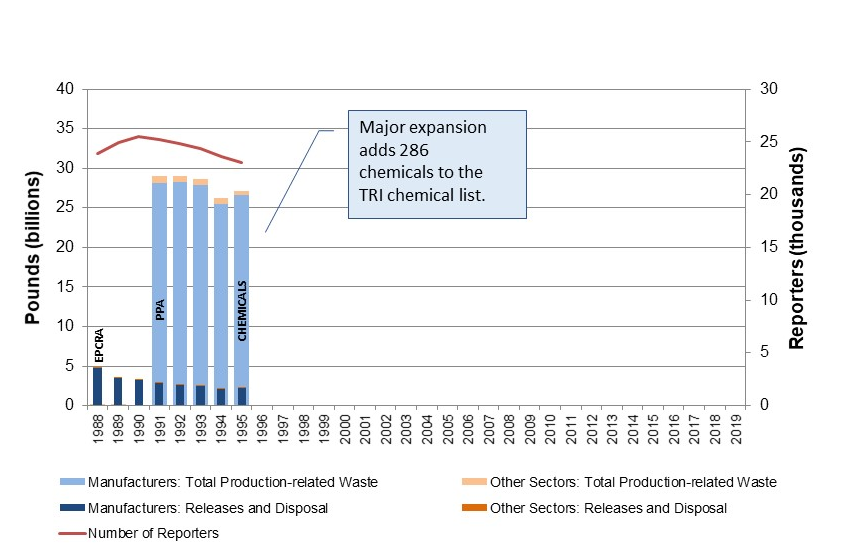
1995
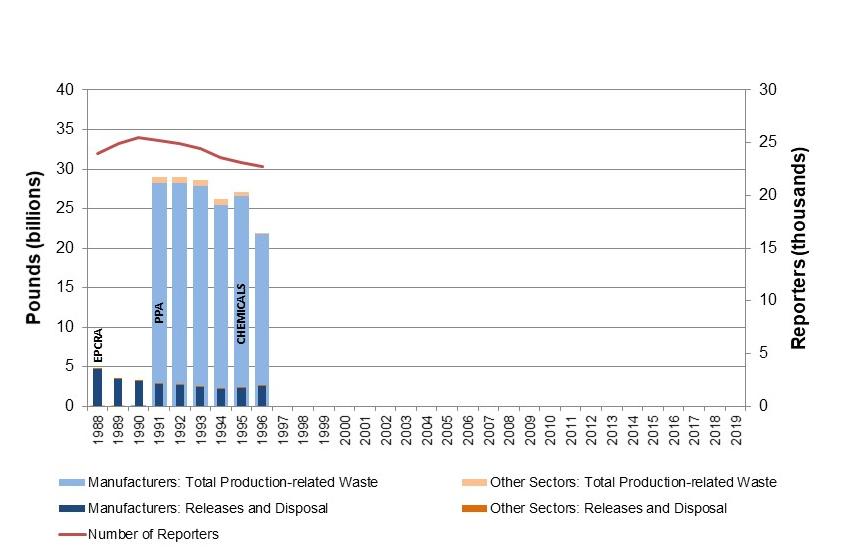
1996
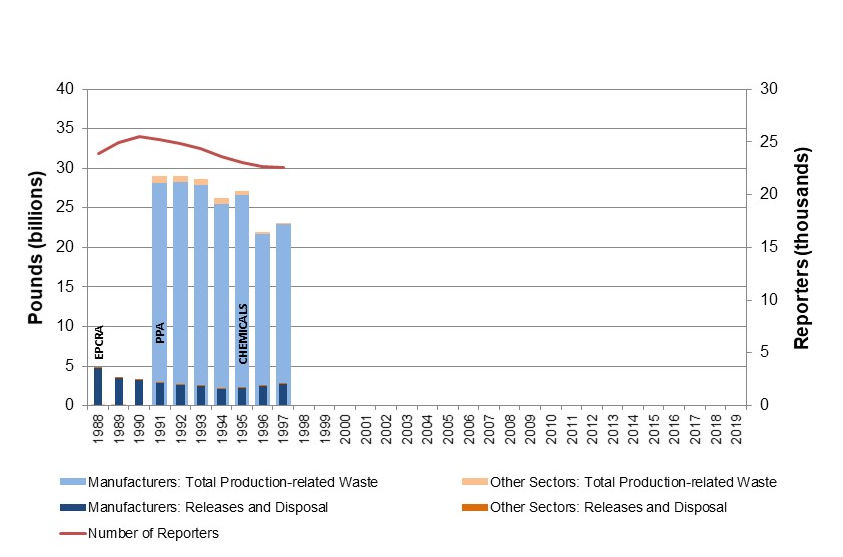
1997
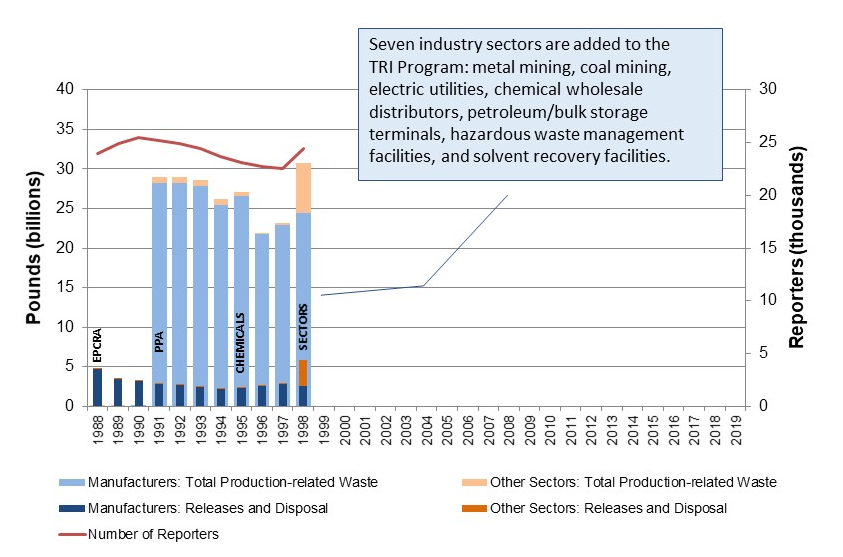
1998
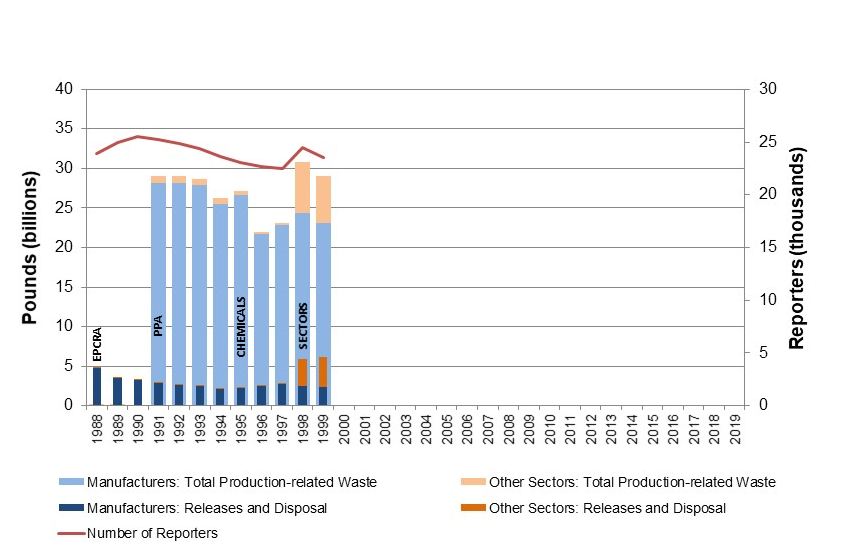
1999
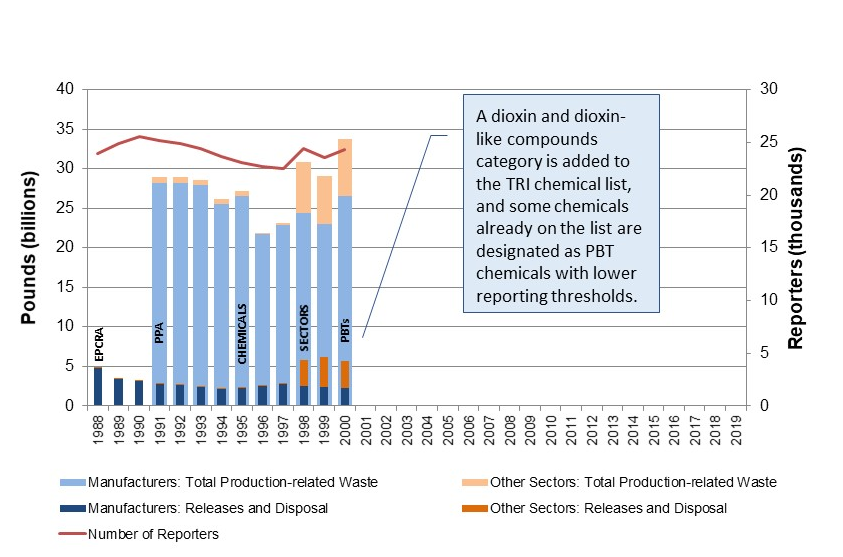
2000
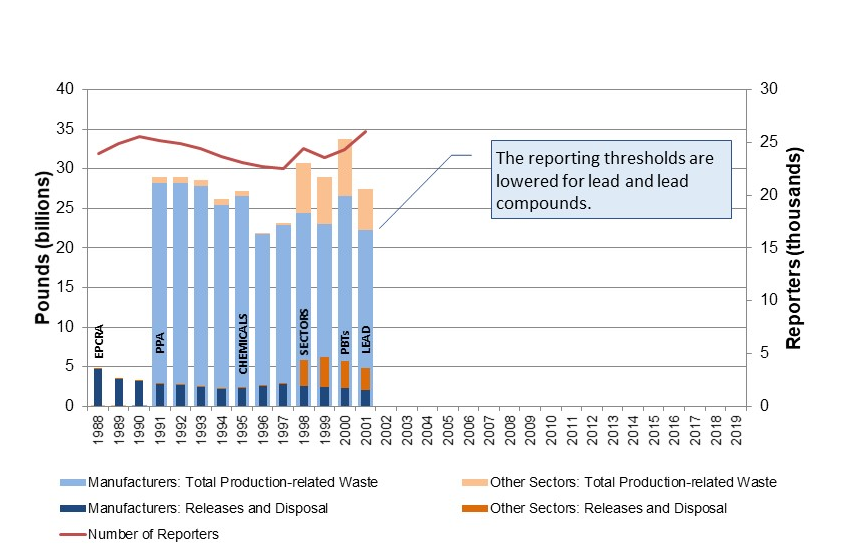
2001
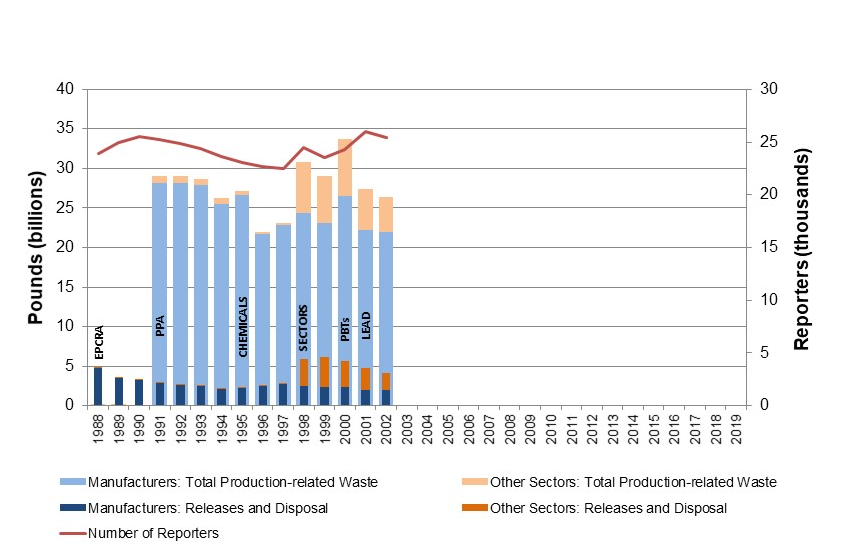
2002
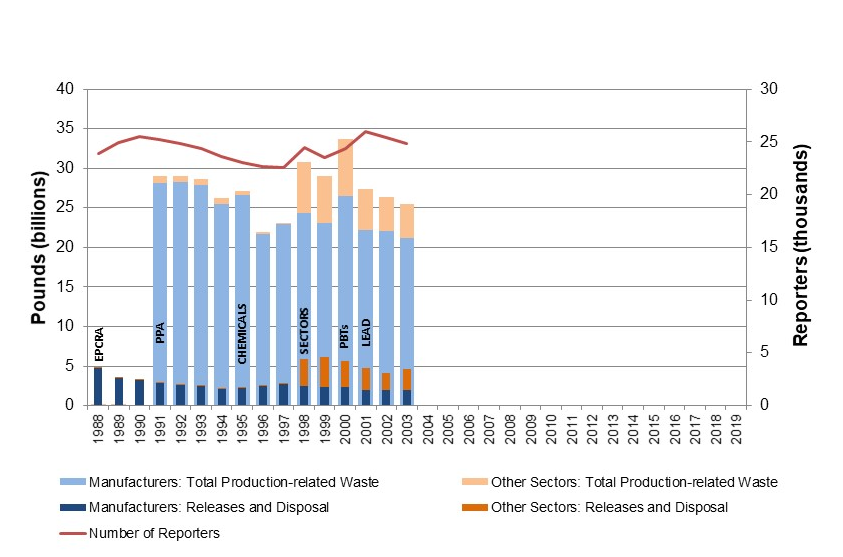
2003
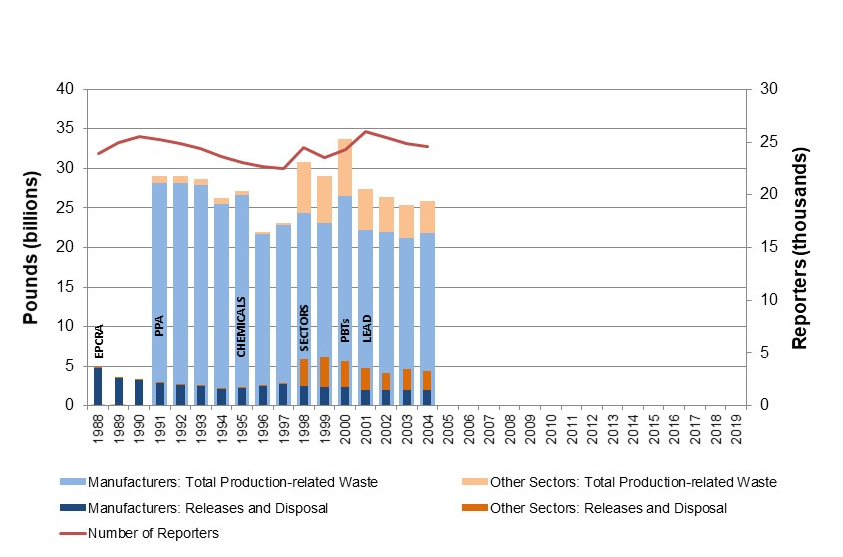
2004
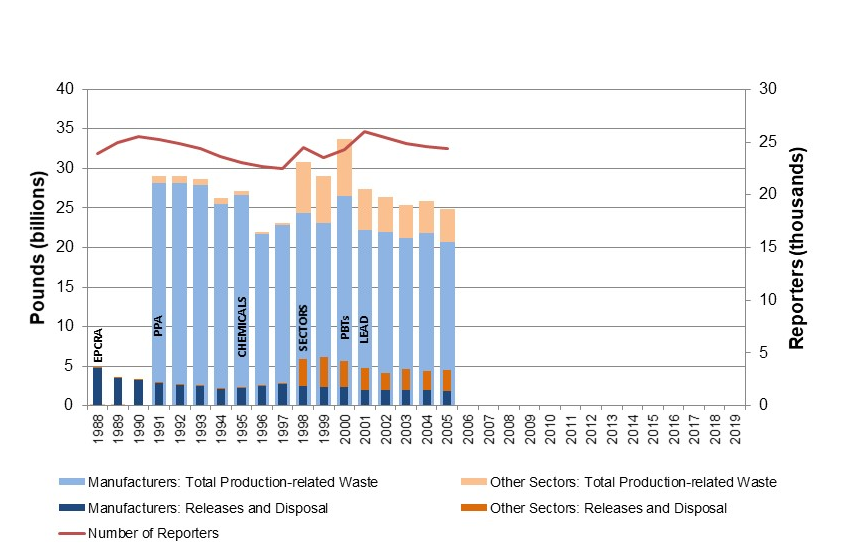
2005
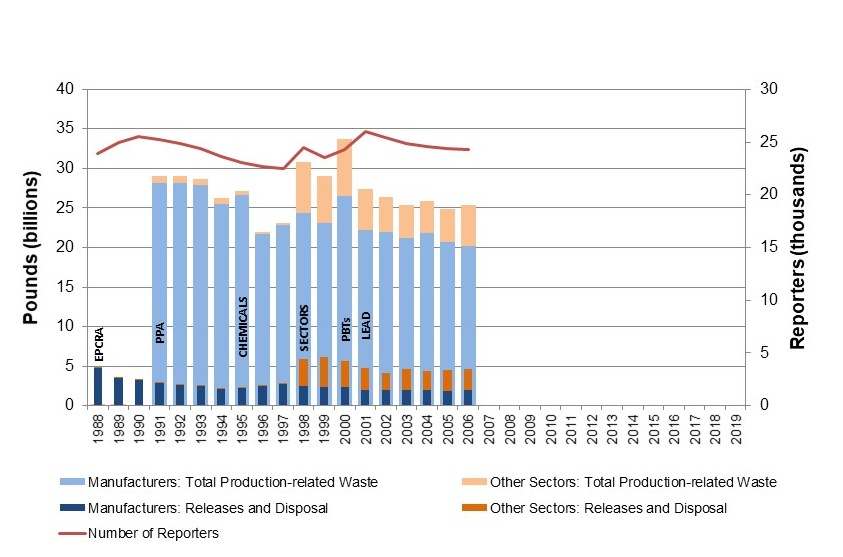
2006
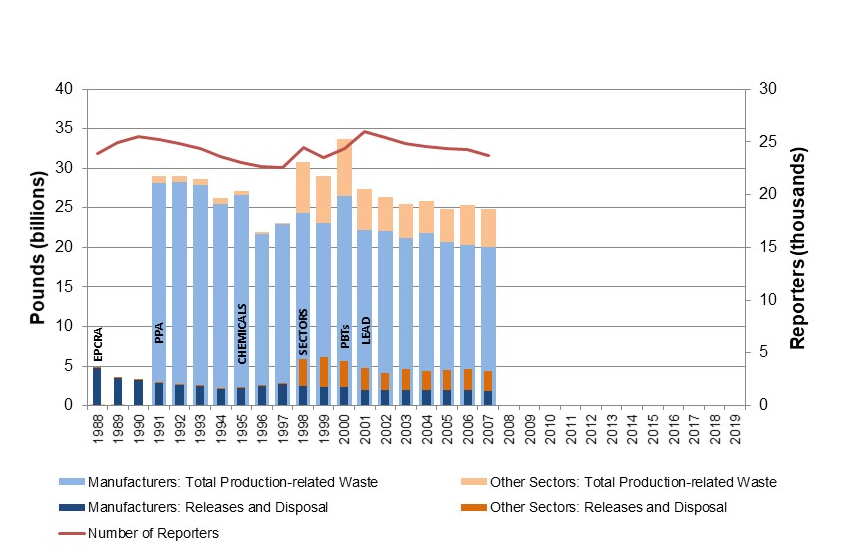
2007
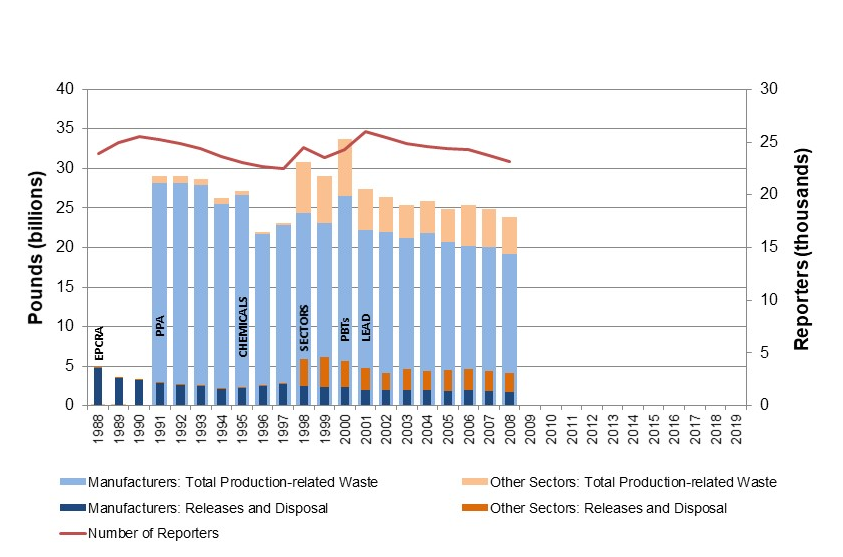
2008
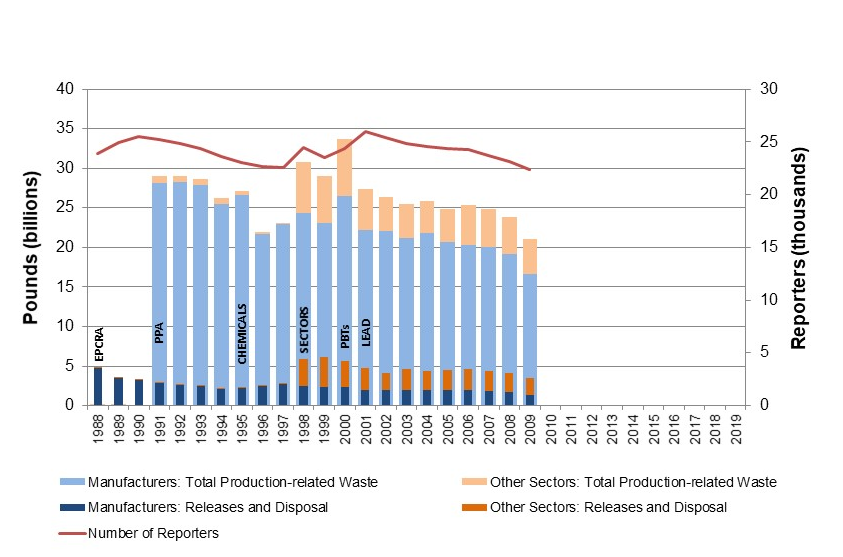
2009
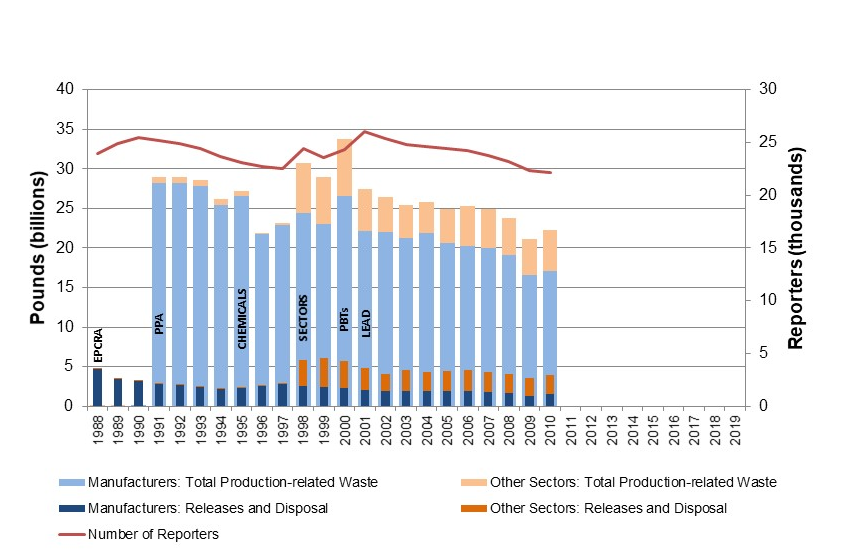
2010
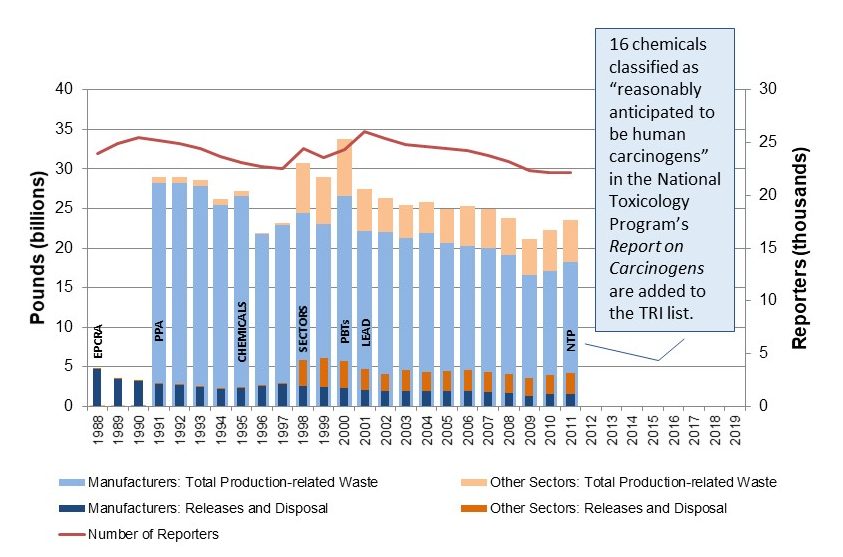
2011
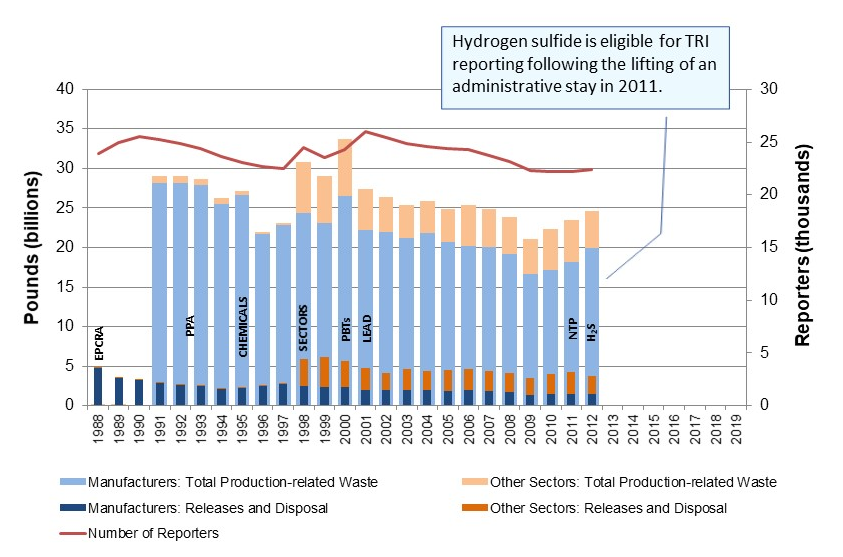
2012
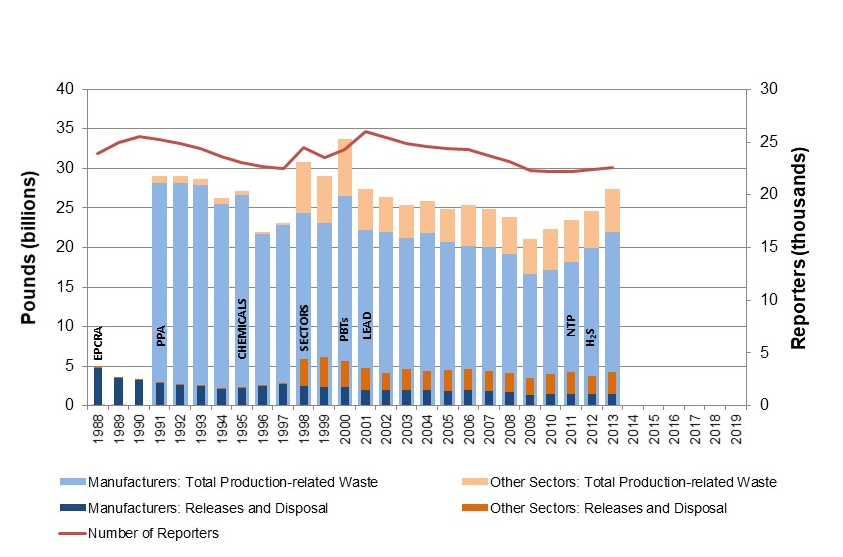
2013
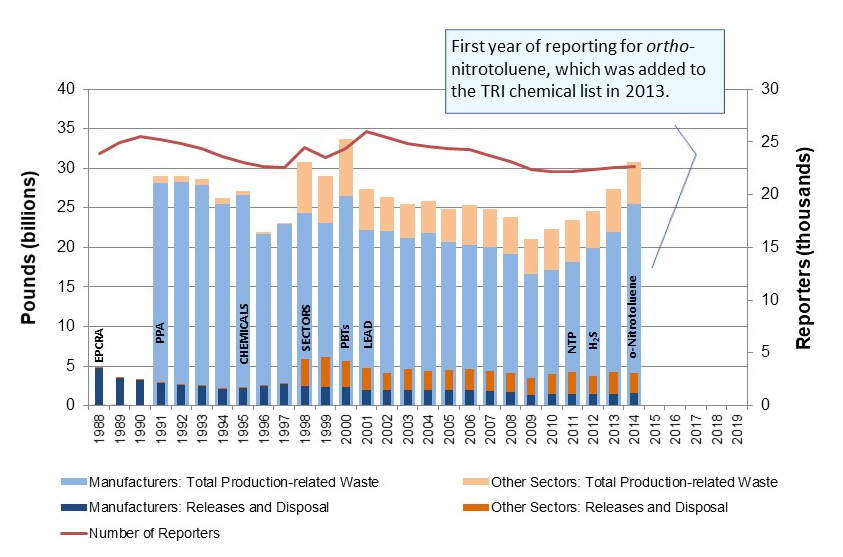
2014
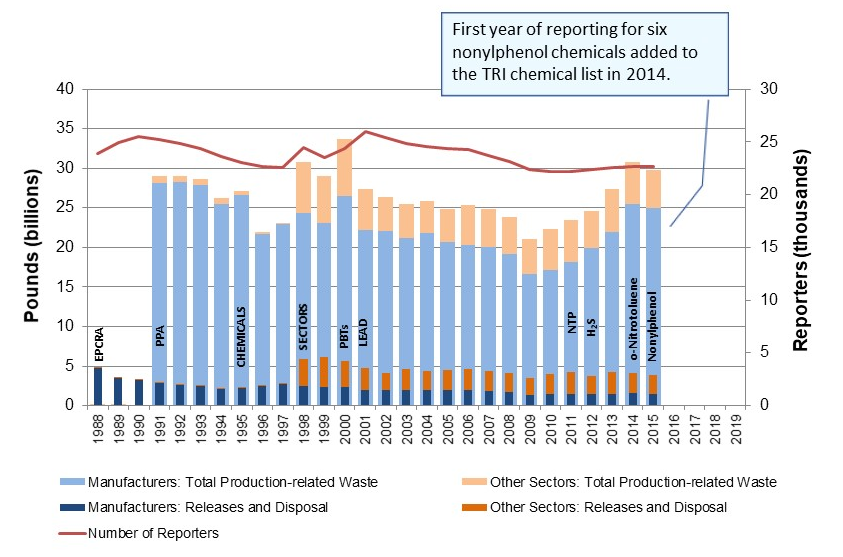
2015
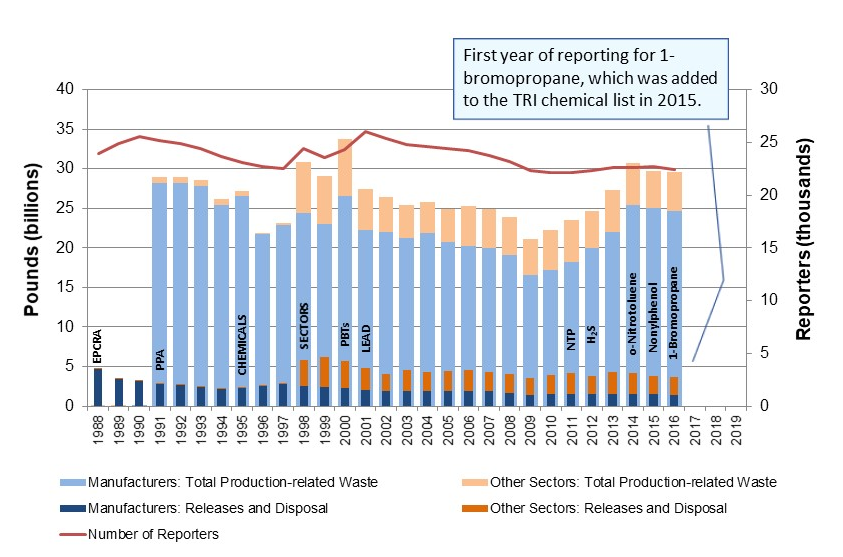
2016
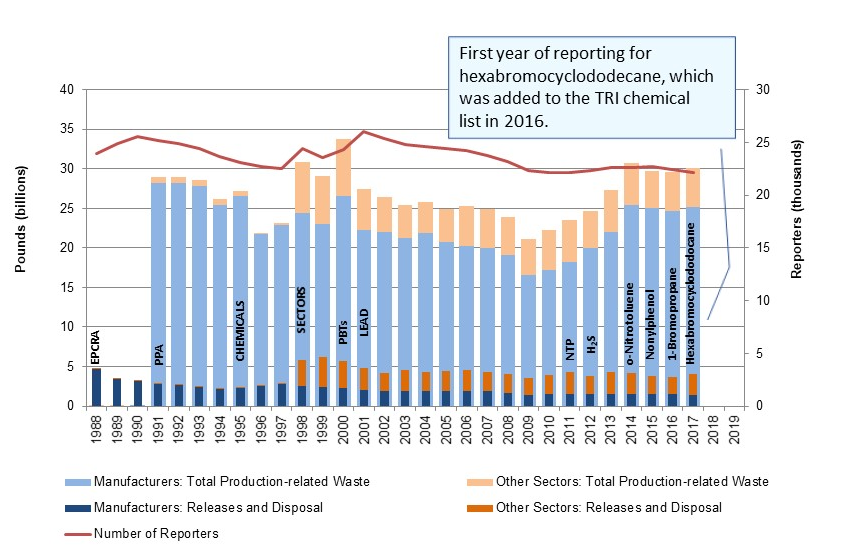
2017
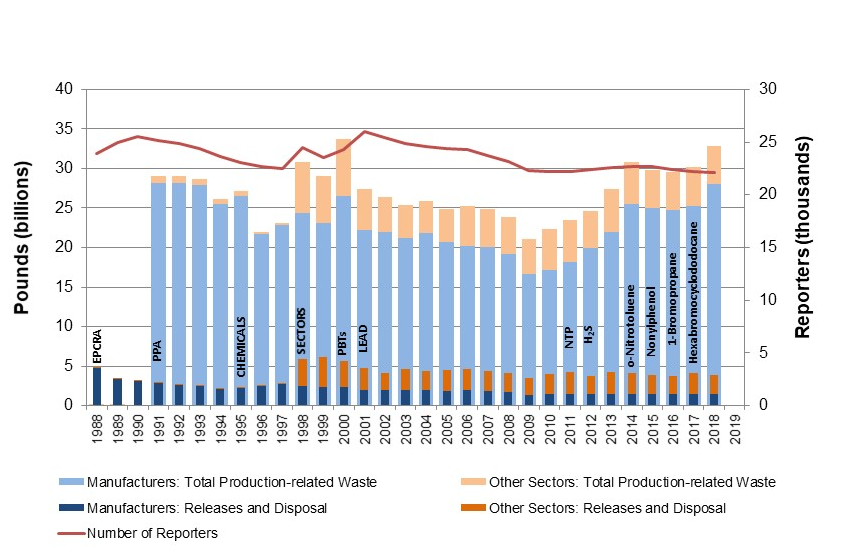
2018
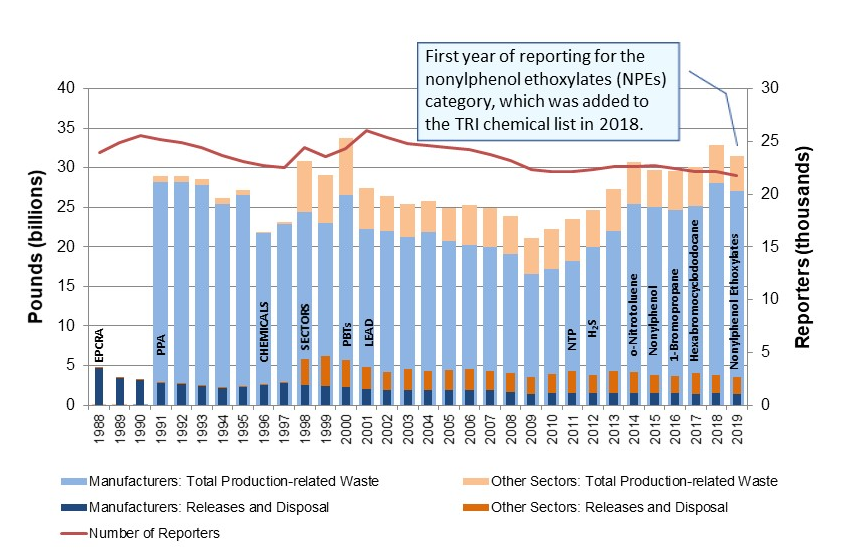
2019
Slideshow Highlights
- 1988 was the second year of TRI reporting under the Emergency Planning and Community Right-to-Know Act (EPCRA). More than 22,000 facilities collectively reported releasing nearly 5 billion pounds of TRI-covered chemicals.
- 1991 was the first year of waste management reporting, required by the Pollution Prevention Act (PPA) of 1990.
- Releases declined between 1988 and 1995, when a major expansion of the program added 286 chemicals to the TRI chemical list.
- In 1998, seven industry sectors were added to the TRI Program: metal mining, coal mining, electric utilities, chemical wholesale distributors, petroleum/bulk storage terminals, hazardous waste management facilities, and solvent recovery facilities.
- 1998 was also the first year that the total quantity of production-related waste managed by all TRI facilities exceeded 30 billion pounds.
- In 2001, more than 25,000 facilities reported to the TRI Program, the most in the program's history.
- In 2011, 16 chemicals classified as "reasonably anticipated to be human carcinogens" by the National Toxicology Program were eligible for TRI reporting for the first time.
- In 2012, hydrogen sulfide was eligible for TRI reporting following the lifting of an administrative stay the previous year.
- 2014 was the first year of reporting for ortho-nitrotoluene.
- 2015 was the first year of reporting for six nonylphenol chemicals added to the TRI list the previous year.
- 2016 was the first year of reporting for 1-bromopropane.
- 2017 was the first year of reporting for hexabromocyclododecane.
- 2019 was the first year of reporting for the nonylphenol ethoxylates category.
